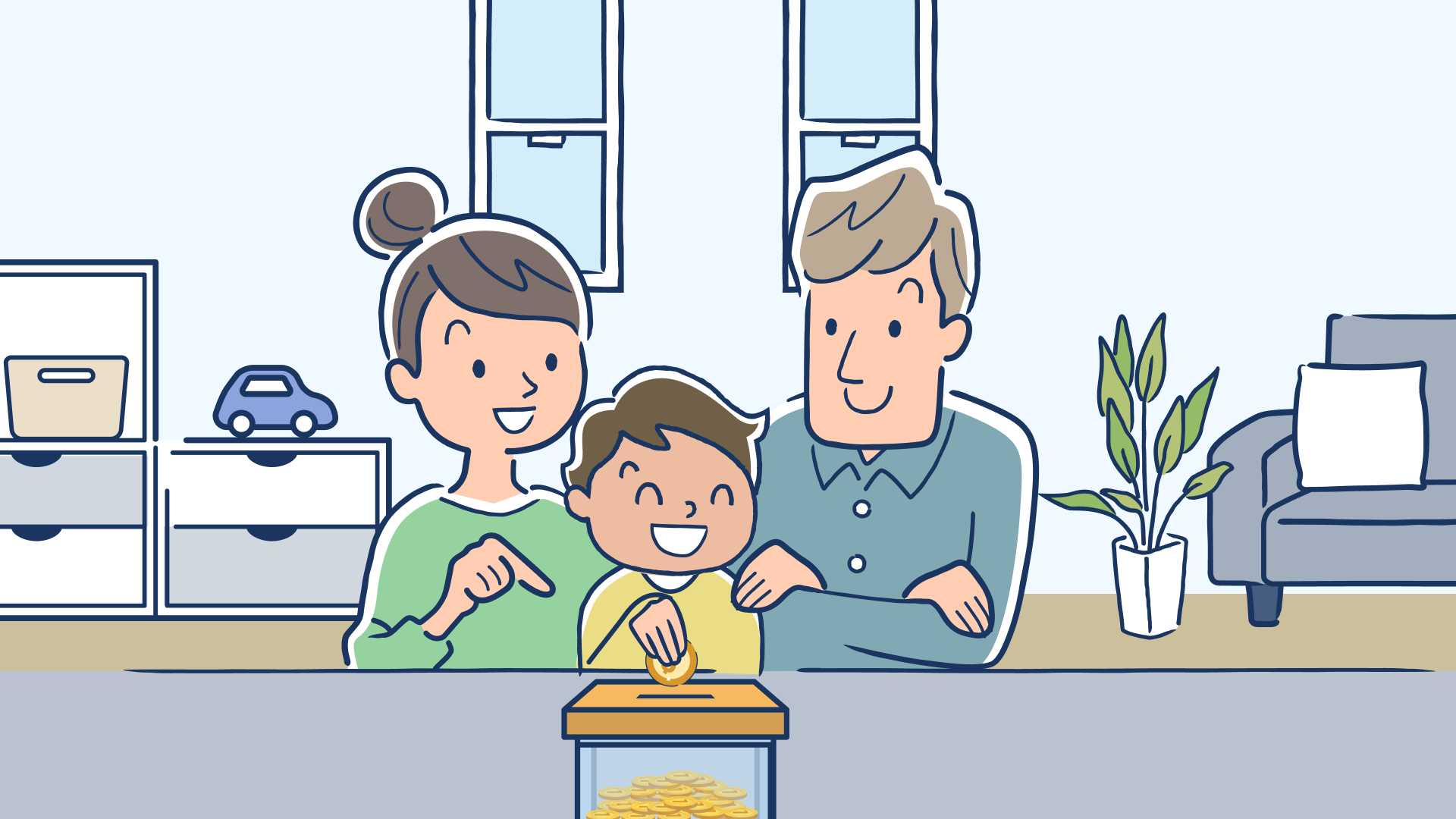Time to read : 5 Minutes
As we inch more into a cashless society, there’s less… and less money passing through our hands. So that got me thinking: when you’re not physically handling money, what does that mean about the value of money, especially for Gen Z and Alpha.
It also made me cast my mind back. In my parents’ heyday they’d receive a pay packet (literally an envelope) with cash. There was no such thing as wages being directly deposited into bank accounts.
Fast forward to today and everything is electronic and automated.
The reality is:
bank branches are closing all around the country
BNPL providers are offering payment plans too tempting to refuse
tap and go via a digital wallet or card is so quick and easy to do, that you may not think twice about it.
So how can you educate kids – big and small – about the value of money when we’re heading towards a cashless society?
How to teach younger children money saving goals
It all starts with baby steps. Start having conversations about the value of money early on. One way is to sit your kids down and tell them your story. Mine went something like this…
When I was in school, the bank paid a visit and we all got a money box. Each week I couldn’t wait to get pocket money, put it through the slot and give it a shake. When the box was finally full, we’d take it to the bank to deposit and then start all over again.
Ok, so perhaps the banks don’t do this so much anymore, but money boxes still exist, and so do gold coins. A simple thing such as how heavy a money box gets over time by saving, can create excitement in children and vivid memories later on in life, such as my experience. It paves the way to setting money saving goals.
How to set boundaries for needs and wants
One vital lesson to teach children when they’re young is the difference between needs and wants – or essentials and non-essentials. This is an important one to learn because throughout life we have to make purchasing decisions that can impact our bank balance and financial wellbeing.
Not being able to control excess or emotional spending can lead to racking up debt. As an example, if you need a car for work – fair enough. But wanting a luxury sports car with leather seats and all the bells and whistles, well that’s going to cost you thousands more. (And as for the insurance... let’s not even go there).
See what I mean? You don’t want to start living beyond your means.
So, how can you start getting this message across from an early age? Look for opportunities in everyday situations. Going to the supermarket is a great place to start.
What happens when you take a child to the supermarket? I bet they’ll ask you to buy something that's not a need... chocolates, lollies, chips, you name it!
Armed with a shopping list, before you head out the door explain to your child everything that’s needed is on the list. Be firm. This not only sets the expectation that you won’t be buying the things they want, but will also reduce excess spending on impulse buys, saving you money at the checkout.
How can I get teens to value money?
One of the best ways to get teens to appreciate money is to get them to work. And there are a few ways to approach this.
If your child is a younger teen, reward them with pocket money for chores around the home. Emptying the dishwasher, vacuuming, taking the rubbish out, washing the car, doing the laundry – the jobs you can allocate are endless. It’ll save you time and money as outsourcing is bound to cost you more.
If your child is an older teen, encourage them to get a part-time job to work after school or on weekends. You could also top up their earning potential by allocating some chores that need doing around the home as well.
But it doesn’t stop there. Help them set some money saving goals. Whether it’s saving for something specific or just saving for the future, knowing they did the hard yards for their money is empowering and a great motivator.
Creating good habits early on can help them be more responsible with their money in the future.
How can I be a good role model?
Kids learn behaviours from parents so if you make good decisions with your money – repeatedly – your kids are already on the right track.
Some of the things you can do include:
resist impulse purchases
buy things that you need which do the job
shop around for the best price and demonstrate how much you saved
create a monthly budget, talk about it and stick to it
give pep talks on the benefits of saving.
Bottom line
Parents can play a big role in teaching children about the value of money, even as we become a more cashless society.
All the good habits you instill – motivational conversations and positive behaviours can add up.
And remember if you ever need to pull out the old saying … money doesn’t grow on trees, do it. I know I do. I then tell them to go water the money tree!
Go deeper:
What Really Happens If You Save One Dollar A Day?
